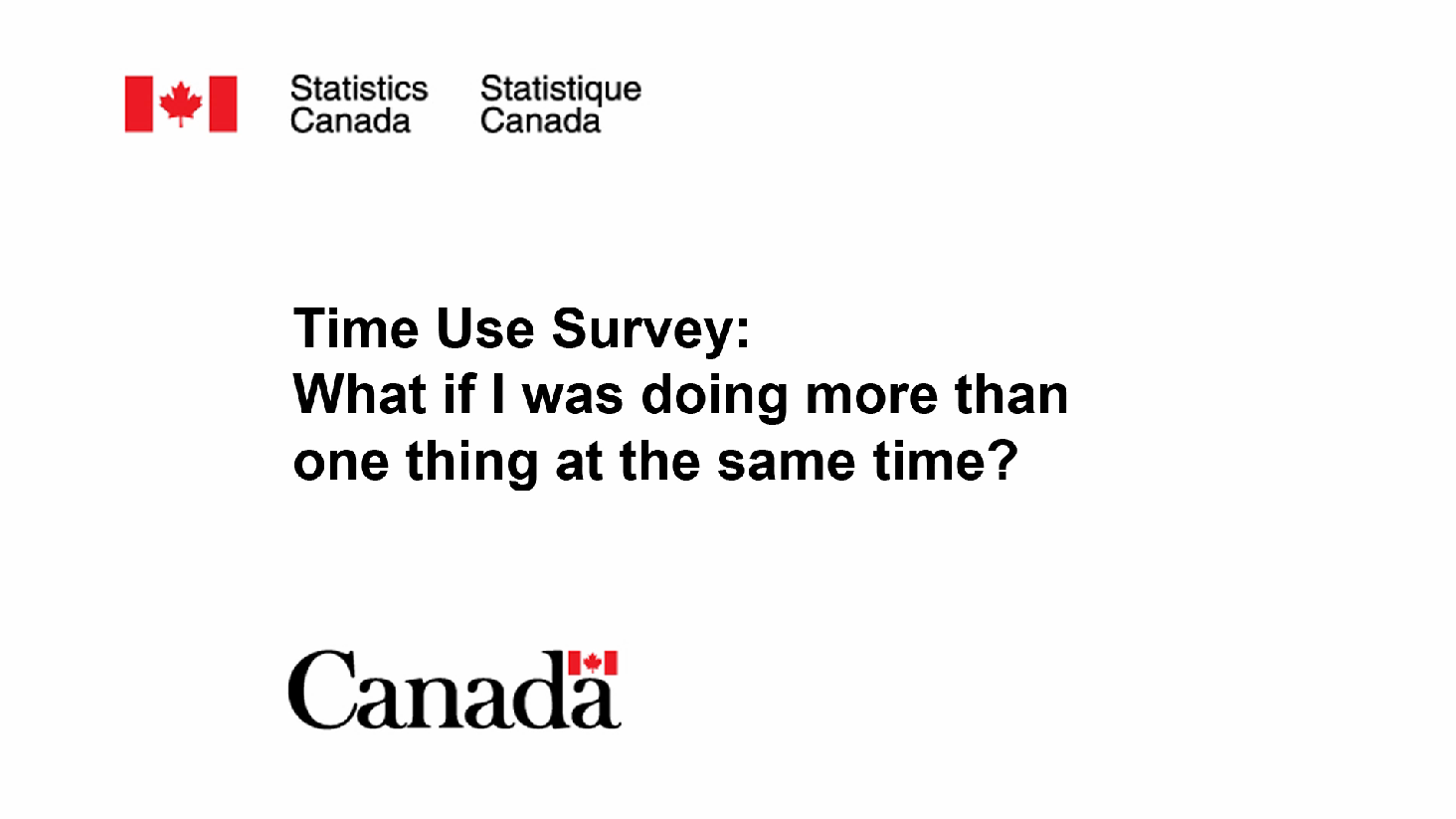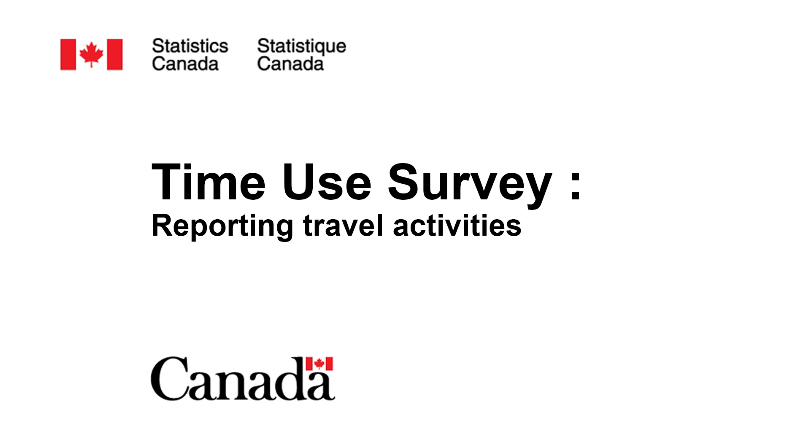Have you received an invitation to participate in the Time Use Survey? On this page, you will find information about the 24-hour time use diary, which is the main focus of the survey. Watch the three videos below to get an overview of the diary, to learn how to report simultaneous activities (doing two or more things at the same time), and to learn how to report travel activities.
How does the diary work and what questions are asked?
This video is a tool for respondents who have been selected for the Time Use Survey 2022, and explores how to complete the time diary.
What if I was doing more than one activity at the same time?
This video explores how to report simultaneous activities within the time diary of the Time Use Survey 2022.
How to report travel activities?
This video explores what to do if a travel edit is triggered while completing the time diary of the Time Use Survey 2022.
Why does Statistics Canada need so much detail about my day?
Time use data are used to identify which percentage of Canadians have participated in a given activity, regardless of the length of time it takes. Taking fifteen minutes to help an elderly neighbor with housework may not seem like a significant part of your day because it is a quick, one-time activity, but collecting this information helps identify the percentage of Canadians who provide informal help. It is important to include all these small activities in your time use diary.
What time period does the diary cover?
You will be asked to account for a 24-hour period in the diary portion of the survey. The 24-hour period starts at 4:00 am and ends at 4:00 the next morning. After completing the diary, you will be asked a few more questions about your day and your use of time.
Can I choose which day to report?
No, please report for the day indicated in your invitation. Even if you think a different day is more interesting, it is important that you indicate the activities you did on your requested day. Time use trends vary between different days (e.g., a Wednesday often looks very different than a Sunday). In order for the data to accurately portray how Canadians spend their time, Statistics Canada assigns specific days to the respondents in order to ensure an even distribution of responses on each day.
What if my assigned reference day is not a good representation of my usual routine?
Respondents are asked to report on days that might not always be a good representation of their average day, either due to short-term illness, vacation, or some other event. Although it might seem unrepresentative of a typical day, the information is still very useful.
Will the survey ask about specific personal or private activities?
Data collected from the Time Use Survey are grouped into several broad categories. While you may participate in some private or personal activities during your diary day, you will not be asked to disclose the specific details. For example, activities like taking a shower, brushing teeth or hair, getting dressed, meditating and sexual activities are all reported as « Personal care ». Statistics Canada always applies strict measures to protect the confidentiality of your information and the respect of your privacy.
The survey is not a way for the government to learn about you as an individual.
The data will be used to understand how Canadians as a whole (or by province, age, gender, visible minority status, etc.) use their time. Your responses will always be confidential. For more information on how Statistics Canada protects your data, visit our Trust Centre.


